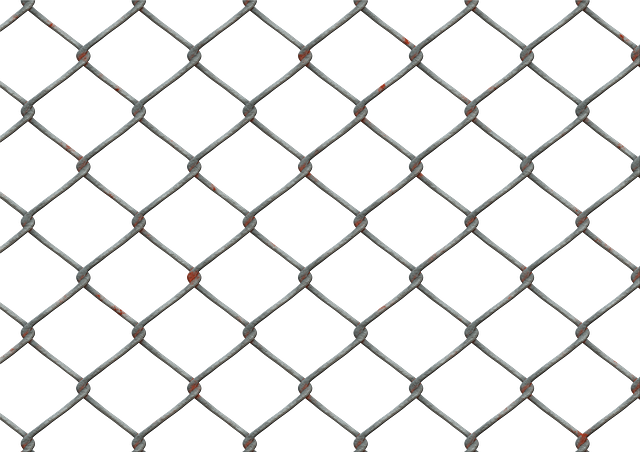In New Bedford, MA, the pursuit of sustainable living extends to our outdoor spaces, particularly with the choice of fencing materials. This article explores eco-friendly fencing options and their multifaceted benefits for the city’s residents. From reducing environmental impact to enhancing garden aesthetics, we delve into how sustainable fencing can transform backyards while promoting a greener New Bedford. By understanding the advantages and popular choices, homeowners can make informed decisions that contribute to both beauty and biodiversity.
- Understanding Eco-Friendly Fencing Options in New Bedford
- Benefits of Sustainable Fencing Materials for Your Property
- Popular Eco-Conscious Fencing Choices for Your Backyard
- How Green Fences Can Enhance Your Garden's Aesthetics
- Environmental Impact: Traditional vs. Eco-Friendly Fencing
- Installation and Maintenance Tips for Long-Lasting Eco-Fences
Understanding Eco-Friendly Fencing Options in New Bedford
In New Bedford, MA, understanding eco-friendly fencing options is more than just a trend; it’s a conscious decision to contribute to a greener environment. These options cater to homeowners and businesses seeking sustainable alternatives to traditional fences. The market now offers diverse materials ranging from recycled plastic and wood composite to natural fibers like bamboo and hemp. Each material boasts unique properties, ensuring aesthetic appeal, durability, and environmental benefits.
Recycled content not only reduces waste but also lowers the carbon footprint of production. Natural fiber fences provide excellent insulation and are biodegradable, making them an eco-conscious choice. Moreover, these materials often require less maintenance compared to conventional fences, saving time and resources in the long run. With New Bedford’s focus on sustainability, adopting eco-friendly fencing becomes a step towards preserving natural beauty and ensuring a healthier planet for future generations.
Benefits of Sustainable Fencing Materials for Your Property
Eco-friendly fencing materials offer numerous advantages for homeowners looking to enhance their New Bedford, MA property while minimizing environmental impact. These sustainable alternatives provide an aesthetic appeal that complements various landscape designs, from rustic natural settings to modern urban gardens. One of the key benefits is their reduced carbon footprint; compared to traditional fencing made from processed wood or metal, eco-friendly options are often locally sourced, manufactured using renewable resources, and have lower energy requirements during production.
Additionally, these materials are designed to withstand harsh weather conditions, ensuring longevity and reducing maintenance needs. Many sustainable fencing solutions are made from recycled plastic or natural fibers, making them resistant to rot, decay, and pest damage. This durability translates to cost savings for homeowners over time, as they won’t need to frequently replace or repair fences. Moreover, these materials contribute to biodiversity by providing habitats for local wildlife and helping to mitigate the urban heat island effect, creating a more balanced and eco-conscious environment around your property.
Popular Eco-Conscious Fencing Choices for Your Backyard
In New Bedford, MA, homeowners seeking eco-friendly fencing options have a variety of sustainable choices to enhance their backyards. One popular option is bamboo fencing, known for its rapid growth and strength. Bamboo offers both aesthetic appeal with its natural beauty and structural integrity, making it an excellent choice for both decorative and functional fencing. Another preferred option is recycled plastic fencing, which is durable, low-maintenance, and made from post-consumer waste, reducing environmental impact.
These materials not only contribute to a greener environment but also provide long-lasting solutions that require minimal upkeep compared to traditional wooden fences. Whether it’s for privacy, security, or aesthetic purposes, these eco-conscious fencing choices offer a balance between style and sustainability, ensuring your backyard becomes a harmonious blend of natural beauty and modern living.
How Green Fences Can Enhance Your Garden's Aesthetics
Green fences, crafted from natural materials like bamboo, hemp, or recycled plastic, offer more than just an eco-conscious alternative to traditional fencing. They can significantly enhance your garden’s aesthetics by providing a visually appealing border that blends harmoniously with the surrounding landscape. Unlike solid wooden or vinyl fences, green fences feature a lattice structure that allows sunlight and air to filter through, creating a vibrant, healthy environment for plants to thrive. This natural beauty adds depth and dimension to your outdoor space, transforming it into a lush oasis that invites you to relax and enjoy nature’s splendor.
Environmental Impact: Traditional vs. Eco-Friendly Fencing
In New Bedford, MA, like many places worldwide, traditional fencing materials have a significant environmental impact due to their production and disposal methods. These materials often involve non-renewable resources, contribute to deforestation, and emit harmful greenhouse gases during manufacturing. Plastic and wood fences, while common, can end up in landfills or pollute water bodies if not properly recycled or disposed of.
Eco-friendly fencing materials, on the other hand, offer a sustainable alternative with minimal environmental impact. These materials are typically made from renewable resources like bamboo, recycled metal, or organic composites. They help reduce carbon footprints, preserve natural habitats, and contribute to a circular economy by extending product lifespans through recyclability. By choosing eco-friendly fencing options, New Bedford residents can make environmentally conscious decisions that positively influence the local ecosystem and global climate goals.
Installation and Maintenance Tips for Long-Lasting Eco-Fences
When installing an eco-friendly fence, proper technique and attention to detail are key. Start by preparing the ground, ensuring it’s level and clear of any obstructions. Follow manufacturer instructions for assembly, using suitable tools and hardware. For natural materials like wood or bamboo, treat them with eco-approved preservatives to protect against rot and pests. Regular cleaning and inspection are crucial maintenance steps. Remove debris, especially after storms, to prevent water damage. Inspect for loose panels or damaged posts, fixing issues promptly to maintain structural integrity. Re-tighten hardware as needed, ensuring the fence remains secure and stable. Annual light repairs and treatments will help extend its lifespan, keeping your eco-fence vibrant and functional for years to come.
